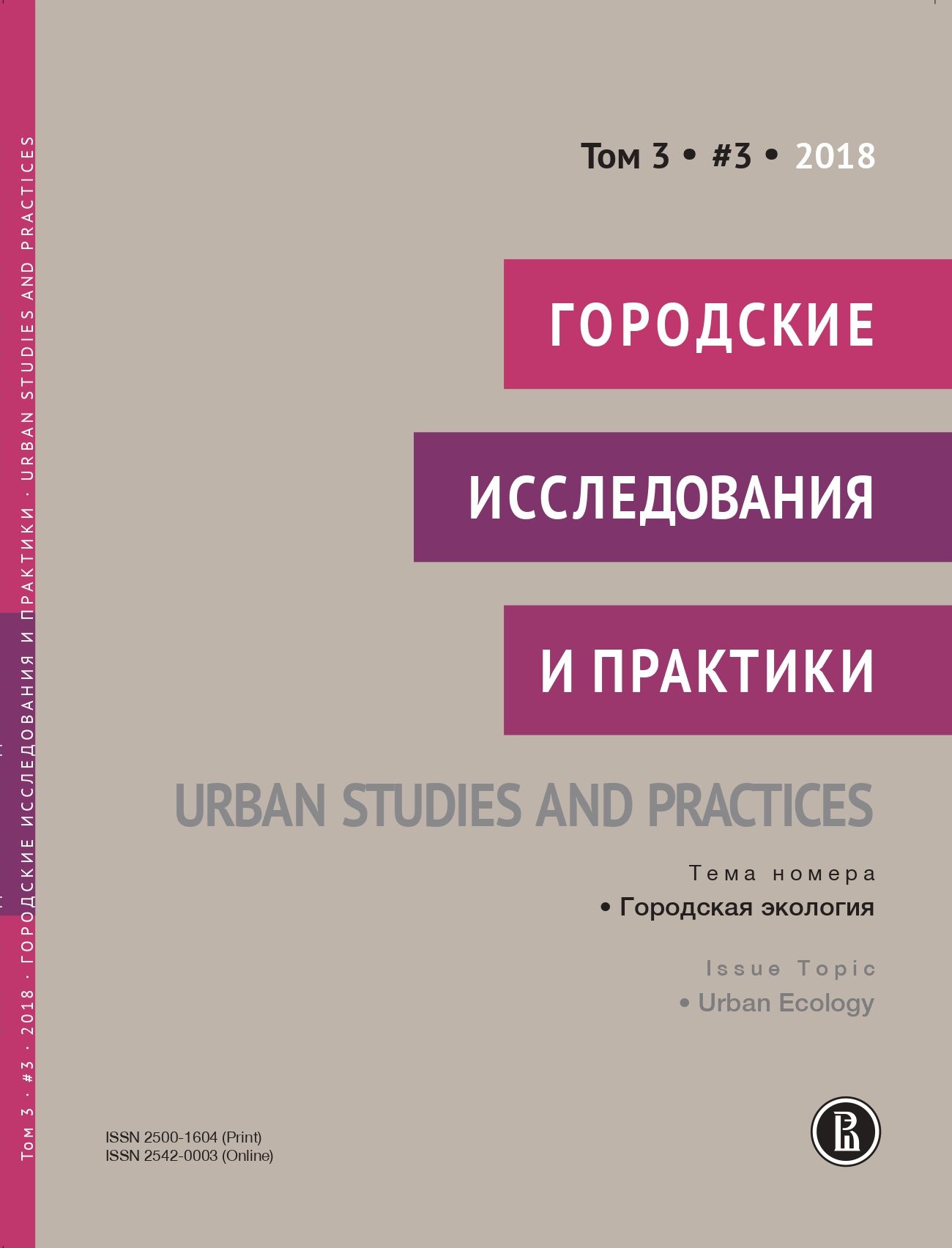High Quality Open Spaces in Urban Development — Selected Examples from Graz, Austria
Abstract
Growing urbanization poses an enormous challenge to city planners. Noticeable effects of the increased population density in cities include housing shortages, rising real estate prices, increased traffic, air pollution, shortages of green spaces and attractive public spaces, the rising cost of urban infrastructure and the risk of social tensions. Especially in dense urban areas, public open spaces (squares and streets, urban parks and spacious recreational areas) have become increasing important. Their design, functionality and the adaption to the needs of the residents significantly influences the quality and atmosphere of urban coexistence. The consideration of quality criteria is essential for the creation of sustainable, livable and smart open spaces. Modern approaches to sustainable planning in urban areas and the versatile aspects of state-of-the-art open space design are the core themes of this article. General aspects of landscape planning in Austria and selected best practice projects in the context of urban development are presented.
This article gives an overview of open space planning in Austria. To be successful, projects must consider the specific needs of city districts, which requires tailor-made approaches and an interdisciplinary planning team. To be accepted and adequately used by the public, projects must be based on a detailed analyses of the spatial, natural and social conditions.
The complex and diverse challenges of open space planning in Austrian cities can be seen as representative for other cities, as certain urban trends occur (in slightly altered dimensions) all over Europe or on an even bigger scale. Selected best practice urban planning projects, which have been realized by freiland Environmental Consulting CE Ltd, based on state-of-the-art principles, demonstrate modern planning approaches to tackling these challenges.
Downloads
References
architekturbüro HALLE 1 Neue Mitte Lehen: Ein neuer Stadtteil entsteht. (2008) Available at: [http://www.halle1.at/prj/123-1.html](http://www.halle1.at/prj/123-1.html) (accessed 7 August 2018).
Detzlhofer A., Dessovic S. (2014) Überprüfung der Freiraumqualitäten im Realisierungsprozess neuer Wiener Wohnquartiere: Gezeigt an den Beispielen Eurogate und Nordbahnhof (1. Bauphase).
freiland CE Ltd. Masterplan Leoben. (2014) Available at: [http://www.freiland.at/de/menu109/projekte275/](http://www.freiland.at/de/menu109/projekte275/) (accessed 10.08.2018).
freiland CE Ltd. Masterplan Mur Graz Mitte. (2012a) Available at: [http://www.freiland.at/de/menu108/projekte122/](http://www.freiland.at/de/menu108/projekte122/) (accessed 10 August 2018).
freiland CE Ltd. Masterplan Mur Graz Süd. (2012b) Available at: [http://www.freiland.at/de/menu107/projekte116/](http://www.freiland.at/de/menu107/projekte116/) (accessed 10 August 2018).
freiland CE Ltd., Hohensinn Architektur Graz-Reininghaus — Öffentlicher Raum. (2015) Available at: [http://www.freiland.at/de/menu45/projekte282/?highlight=true&unique=1533897157](http://www.freiland.at/de/menu45/projekte282/?highlight=true&unique=1533897157) (accessed 10 August 2018).
freiland CE Ltd. (2005) spaceunit Network LEBMUR — Lebensraum Mur: Konzept zur Freizeit- und Erholungsnutzung.
freiland CE Ltd. (2009) yverkehrsplanung, SRU Reissner Stadtentwicklungskonzept Murfeld.
Hammerl B., Berkhout R., Oswald E. (2016) Open-Innovation- und Living-Lab-Ansätze in der Praxis der Stadtentwicklung — Herausforderungen, Dilemmas und Chancen // SMART ME UP! How to become and how to stay a Smart City, and does this improve quality of life? Proceedings of 21st International Conference on Urban Planning, Regional Development and Information Society, s. 491–499.
Humboldt-Viadrina Governance Platform Trialoge: Stadtentwicklung. (2018) Available at: [https://www.governance-platform.org/trialoge/stadtentwicklung/?cn-reloaded=1](https://www.governance-platform.org/trialoge/stadtentwicklung/?cn-reloaded=1) (accessed 7 August 2018).
Kleboth Lindinger Dollnig Rahmenplan Smart City Project Waagner-Biro. (2013) Available at: [http://www.smartcitygraz.at/wordpress/wp-content/uploads/2013/10/237_130626_Rahmenplan-Smart-City_Lageplan.pdf](http://www.smartcitygraz.at/wordpress/wp-content/uploads/2013/10/237_130626_Rahmenplan-Smart-City_Lageplan.pdf) (accessed 10 August 2018).
Land Steiermark Gesamte Rechtsvorschrift für Landesentwicklungsprogramm. (2018) Available at: [https://www.ris.bka.gv.at/GeltendeFassung.wxe?Abfrage=LrStmk&Gesetzesnummer=20000877](https://www.ris.bka.gv.at/GeltendeFassung.wxe?Abfrage=LrStmk&Gesetzesnummer=20000877) (accessed 2 August 2018).
Land Steiermark Gesetz vom 30. (1976) Juni 1976 über den Schutz der Natur und die Pflege der Landschaft: Steiermärkisches Naturschutzgesetz. Available at: [https://www.ris.bka.gv.at/GeltendeFassung.wxe?Abfrage=LrStmk&Gesetzesnummer=20000835&FassungVom=2017-07-31](https://www.ris.bka.gv.at/GeltendeFassung.wxe?Abfrage=LrStmk&Gesetzesnummer=20000835&FassungVom=2017-07-31) (accessed 2 August 2018).
Magistrat der Stadt Wien STEP 2025: Fachkonzept Grün- und Freiraum. (2015) Available at: [https://www.wien.gv.at/stadtentwicklung/studien/pdf/b008438.pdf](https://www.wien.gv.at/stadtentwicklung/studien/pdf/b008438.pdf) (accessed 2 August 2018).
Magistrat der Stadt Wien STEP 2025: Stadtentwicklungsplan Wien. (2014) Available at: [https://www.wien.gv.at/stadtentwicklung/studien/pdf/b008379a.pdf](https://www.wien.gv.at/stadtentwicklung/studien/pdf/b008379a.pdf) (accessed 7 August 2018).
Magistrat der Stadt Wien Wien in Zahlen. (2017) Available at: [https://www.wien.info/media/files-b2b/wien-in-zahlen.pdf](https://www.wien.info/media/files-b2b/wien-in-zahlen.pdf) (accessed 7 August 2018).
ÖGLA — Österreichische Gesellschaft für Landschaftsplanung und Landschaftsarchitektur Was ist Landschaftsarchitektur? Available at: [http://www.oegla.at/landschaftsarchitektur](http://www.oegla.at/landschaftsarchitektur) (accessed 7 August 2018).
Rathschüler O., Raderbauer J. (2012) Landscape planning in Austria: Selected strategies and projects.
Schwan G., Podann A., Müller M. (2017) Abschlussbericht der Trialogreihe Partizipation im Wohnungsbau. Available at: [https://www.governance-platform.org/wp-content/uploads/2017/12/HVGP_Abschlussbericht_Partizipation-im-Wohnungsbau-4.pdf](https://www.governance-platform.org/wp-content/uploads/2017/12/HVGP_Abschlussbericht_Partizipation-im-Wohnungsbau-4.pdf) (accessed 7 August 2018).
Stadt Graz Grünes Netz Graz. (2005) Available at: [http://www.stadtland.at/htm/projekte/grNetzGraz.htm](http://www.stadtland.at/htm/projekte/grNetzGraz.htm) (accessed 2 August 2018).
Stadt Graz Grünraumsicherung und Grünraum-Offensive. Available at: [https://www.graz.at/cms/beitrag/10257496/8029094/Gruenraumsicherung_und_Gruenraum_Offensive.html](https://www.graz.at/cms/beitrag/10257496/8029094/Gruenraumsicherung_und_Gruenraum_Offensive.html) (accessed 07.08.2018).
Stadt Graz Rahmenplan Graz-Reininghaus. (2010) Available at: [https://www.graz.at/cms/beitrag/10136566/8119891/Rahmenplan_Graz_Reininghaus.html](https://www.graz.at/cms/beitrag/10136566/8119891/Rahmenplan_Graz_Reininghaus.html) (accessed 10 August 2018).
Statistik Austria Vorausberechnete Bevölkerungsstruktur für Wien 2016–2100 laut Hauptszenario. (2017) Available at: [http://www.statistik.at/web_de/statistiken/menschen_und_gesellschaft/bevoelkerung/demographische_prognosen/bevoelkerungsprognosen/027317.html](http://www.statistik.at/web_de/statistiken/menschen_und_gesellschaft/bevoelkerung/demographische_prognosen/bevoelkerungsprognosen/027317.html) (accessed 10 August 2018).
Stadtplanung Graz 4.0 Stadtentwicklungskonzept Graz. (2013a) Available at: [https://www.graz.at/cms/dokumente/10165681_7758015/baa5ce68/131115_STEK.pdf](https://www.graz.at/cms/dokumente/10165681_7758015/baa5ce68/131115_STEK.pdf) (accessed 10 August 2018).
Stadtplanung Graz 4.0 Stadtentwicklungskonzept Graz: Vertiefende Betrachtungen. (2013b) Available at: [https://www.graz.at/cms/dokumente/10165681_7758015/0bd4ba68/131128_Vertiefend.pdf](https://www.graz.at/cms/dokumente/10165681_7758015/0bd4ba68/131128_Vertiefend.pdf) (accessed 7 August 2018).
Tovatt Architects & Planners AB Seestadt Aspern: The Lake Town of Vienna. (2005) Available at: [http://tovatt.com/projects/urban-design/wien/](http://tovatt.com/projects/urban-design/wien/) (accessed 10 August 2018).
ZIS+P Verkehrsplanung Verkehrsentwicklungskonzept Rahmenplan Verkehr Graz-Reininghaus. (2009) Available at: [http://www.zis-p.at/zis_referenzen_projekte_detail_Reininghaus_01.html](http://www.zis-p.at/zis_referenzen_projekte_detail_Reininghaus_01.html) (accessed 10 August 2018).

